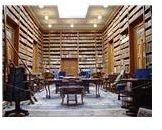Your Librarian and English as a Second Language Students: A Unique Opportunity For Bonding and Education
Creating a Bond
The school librarian and English as a Second Language students can form a unique relationship separate from the one these students
share with other teachers. The librarian knows certain ways to kick things up a notch to allow for a meaningful bond between a literacy partner and a student. ESL students will drink up these learning opportunities enthusiastically, and without them their education just will not have the same oomph and polish.
Librarians who have one or multiple ESL students at their school have to be active in keeping every part of the library functional and useful. A thorough multicultural section in the school library is just as crucial as the reference section; neither carries more importance over the other for any sector of the school service population. It is a good idea for school librarians to look at each section in the same light and take what steps they can to get their library up to par.
Building the Multicultural Section
Add multicultural books to the library that help to build English vocabulary or oral proficiency. Acquire books on an appropriate reading level that are also of high interest. These books should be in English and easy to read but on an appropriate grade/age level. For example, if the school services students who are in middle school then the books could be on subjects that this age likes, but on a third- or fourth-grade reading level.
One direction to take is by the way of the classics. You can also use current books that are highly popular, since chances are they will eventually be the new classics. It is also wise to be mindful of what students are able to get out of the book as well.
Tip: Find books from outside sources that the library can either buy or borrow that are in your students’ native language. Basic library elements like newspapers, dictionaries and encyclopedias should not be hard to find in a foreign language. Try to select already-placed English materials that also offer multiple languages or come in an alternative language. Getting books like these will help a student realize the translation between the two tongues.
Giving the Grand Tour
Inviting ESL students to the library is the simplest way that the school librarian can maneuver his/her way into the life of an ESL student. When there are no other classes going on in the library, the ESL teacher will bring the student to the library to become familiarized with the room and the librarian, and also learn what services the librarian can give the students when they come there to work on a paper or gather information. A tour can be conducted that includes labels for each section. Areas that can be easily explained with pictures would be a good idea here. When the tour is complete, the student is left with a takeaway diagram of the library for future visits.
Soon after the tour, students need to return to the library to work on actual, individual assignments in order for this to be effective. By frequent interaction with each student, a rapport will form between the librarian and ESL students–and the rest will be history.
Additional Resources Suggested
Additional resources for the school library to obtain are audio-books that students may enjoy. Aside from these supplements, listening programs that build second language conversational skills or listening comprehension can also be included on library shelves. The possibilities are actually larger than one would think, but an adept school librarian will have the skill and know-how to find and implement necessary tools to support ESL faculty and students.
